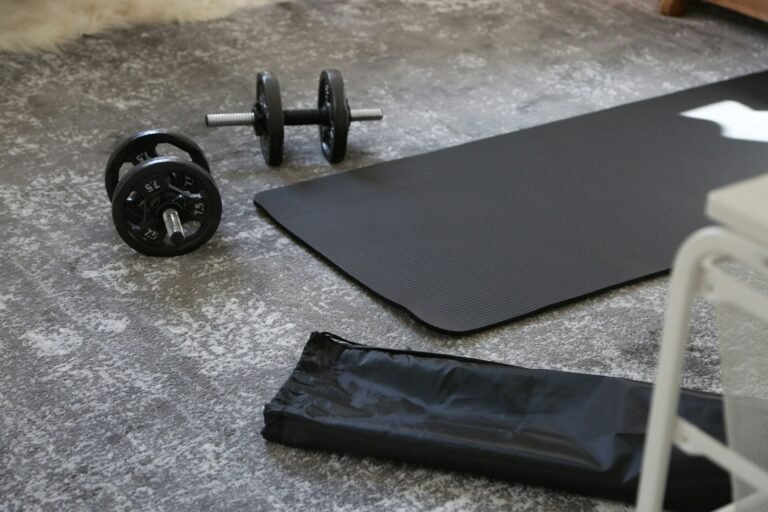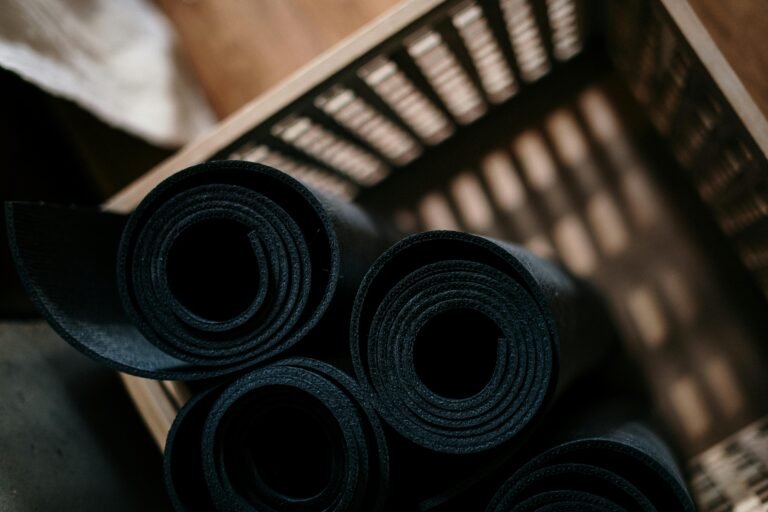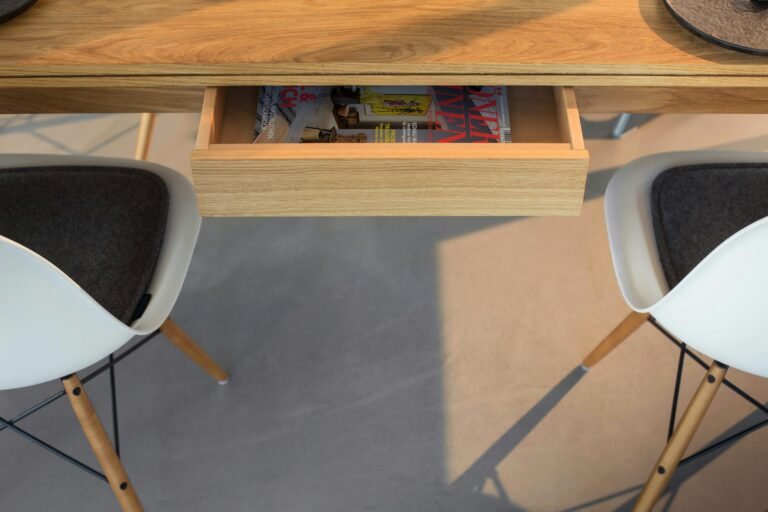Discover the ultimate way to stay comfortable and productive with anti-fatigue standing mats, designed to enhance your experience at standing desks.
Standing desks have revolutionized modern workspaces, promoting better posture and increased energy. However, standing for extended periods can lead to discomfort and fatigue. Anti-fatigue standing mats offer a practical solution, providing the cushioning and support needed to maintain comfort and enhance productivity.
For anyone using a standing desk, understanding the benefits and features of anti-fatigue mats is crucial. These mats not only prevent discomfort but also contribute to overall health and well-being by reducing strain on feet, legs, and joints.
This article will explore the importance of anti-fatigue mats, delve into their key features, compare different types, guide you in making informed purchasing decisions, and provide tips on usage and maintenance. Let’s dive into how these mats can transform your standing desk experience.
Table of Contents
Understanding Anti-Fatigue Mats and Their Importance
Anti-fatigue mats are specially designed floor coverings that help reduce the physical stress associated with standing for long periods. They are particularly beneficial in environments where standing is frequent, such as at standing desks in offices.
- Reduce joint stress and muscle fatigue by providing a cushioned surface.
- Improve posture and circulation, leading to enhanced comfort and productivity.
- Studies show that using anti-fatigue mats can decrease discomfort by up to 50% compared to standing on hard surfaces.
Key Features and Capabilities of Anti-Fatigue Mats
When selecting an anti-fatigue mat, consider features that align with your specific needs and workspace environment. Here are some key features to look for:
- Material Composition: Options include foam, gel, rubber, and PVC, each offering varying levels of support and comfort.
- Non-Slip Surface: Ensures safety by preventing slips and falls, especially in high-traffic areas.
- Durability: High-quality mats withstand wear and tear, making them a long-lasting investment.
Comparing Different Varieties of Anti-Fatigue Mats
Different materials and designs cater to various needs and preferences. Here’s a comparison of popular types:
| Feature/Type | Benefits | Best For | Considerations |
|---|---|---|---|
| Foam Mats | Lightweight and affordable | Home offices | Less durable than other types |
| Gel Mats | Superior comfort with gel cushioning | Extended standing periods | Higher cost |
| Rubber Mats | Highly durable and slip-resistant | Commercial settings | Heavier and may be less cushioned |
Selecting the Right Anti-Fatigue Mat for Your Needs
Choosing the right anti-fatigue mat involves considering your specific environment and personal preferences. Here’s how to make an informed decision:
- Determine the primary use (e.g., home office, kitchen, commercial space).
- Assess the level of cushioning needed based on your standing duration.
- Consider any additional features like eco-friendliness or antimicrobial properties.
Implementing Anti-Fatigue Mats in Your Workspace
Proper placement and usage of anti-fatigue mats can maximize their benefits. Follow these steps to integrate them effectively into your workspace:
- Place the mat in a location where you stand most frequently.
- Ensure the mat is flat and secure to prevent tripping hazards.
- Regularly shift your standing position to enhance circulation and comfort.
Caring for and Maintaining Your Anti-Fatigue Mat
To prolong the life of your anti-fatigue mat, regular care and maintenance are essential. Here are some tips:
- Clean the mat regularly with mild soap and water to prevent dirt buildup.
- Avoid using harsh chemicals that can degrade the mat’s material.
- Store the mat flat or rolled, as folding can cause permanent creases.
Expert Tips and Recommendations
- Rotate your mat periodically to ensure even wear and tear.
- Combine mat use with ergonomic footwear for maximum comfort.
- Invest in a mat with beveled edges to reduce tripping risks.
- Consider mats with a warranty for added peace of mind and quality assurance.
Common Questions About Anti-Fatigue Standing Mats: Enhance Comfort at Standing Desks
Find answers to frequently asked questions about anti-fatigue mats and how they enhance comfort at standing desks.
- Q: How do anti-fatigue mats work?
A: They work by providing a cushioned surface that reduces strain on joints and muscles, thereby decreasing fatigue. - Q: Can anti-fatigue mats be used in wet areas?
A: Yes, many mats are designed to be slip-resistant and can be used in kitchens or other damp environments. - Q: How often should I replace my anti-fatigue mat?
A: Depending on usage and quality, mats typically last 1-3 years. Replace them when they show signs of wear. - Q: Are anti-fatigue mats environmentally friendly?
A: Eco-friendly options are available, often made from recycled materials or designed to be biodegradable. - Q: Do anti-fatigue mats require special cleaning products?
A: No, mild soap and water are usually sufficient. Avoid harsh chemicals that can damage the mat.
Conclusion
An anti fatigue mat is a small change that delivers steady comfort. You spread pressure across a cushioned surface, keep posture active, and stay focused longer. Choose well, place it right, and your workday feels lighter on your feet.
Quick checklist before you buy
-
Thickness and density: aim for about 0.75 in or more with firm rebound that does not bottom out.
-
Top surface: slight terrain or massage zones for micro movement, beveled edges to reduce trips.
-
Base grip: non slip underside that stays put on hard floors and low pile rugs.
-
Size fit: common picks are 20×30 in for tight spots or 24×36 in for wider stances.
-
Durability: closed cell foam, gel infused foam, or rubber with stain resistant cover.
-
Safety and air: low odor, low VOC materials, and edge taper that clears chair casters.
-
Warranty: look for multi year coverage and clear wear guidelines.
Set up for daily ease
-
Place the mat so you stand centered with elbows near 90 to 100 degrees at the keyboard.
-
Alternate stances every few minutes: narrow, wide, one foot forward, heel raises.
-
Pair with supportive shoes and a stable footrest for occasional weight shifts.
-
If you switch to sitting, park the chair behind the mat or slide the mat forward to avoid curled edges.
Care basics
-
Wipe weekly with mild soap and water, then dry flat.
-
Rotate the mat monthly for even wear.
-
Store flat or gently rolled with the top side out. Avoid sharp heels and heavy edges that can dent the surface.
Ready to upgrade your standing desk comfort? Measure your space, note how long you stand each day, then shortlist two mats that match your thickness target, grip needs, and warranty.
Check out this related post: Standing Desk Mats for Comfort: Ergonomic Solutions for Prolonged Standing
Explore this topic: Anti-Fatigue Mats
Plan your layout in Planner 5D
This article contains affiliate links. If you make a purchase, we may earn a commission at no extra cost to you.
Last updated on August 14, 2025







